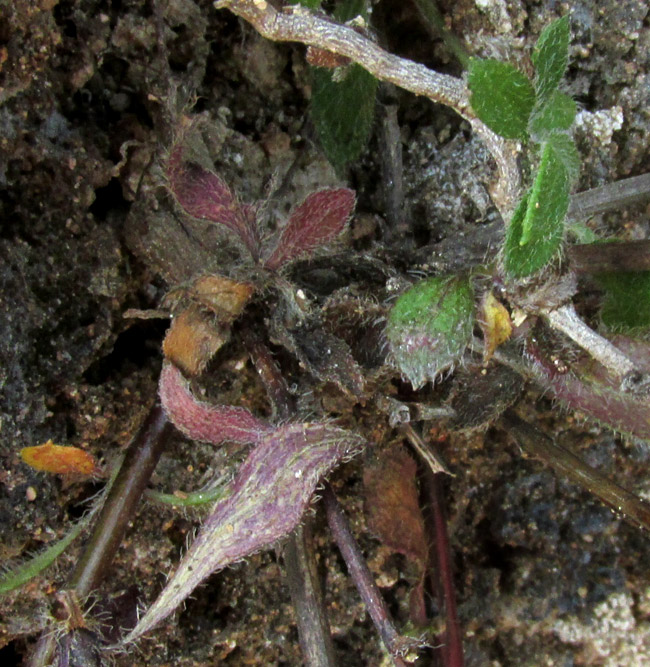Excerpts from Jim Conrad's
Naturalist Newsletter
entry from field notes dated January 19, 2023, taken along steep, one-lane gravel road ascending forested, northeast-facing mountain slope, elevation ±2,380m (7600 ft); bedrock of Cretaceous limestone; on the south side of Pinal de Amoles, Querétaro state, MÉXICO, (N21.134°, W99.629°)
MEXICAN FLEABANE
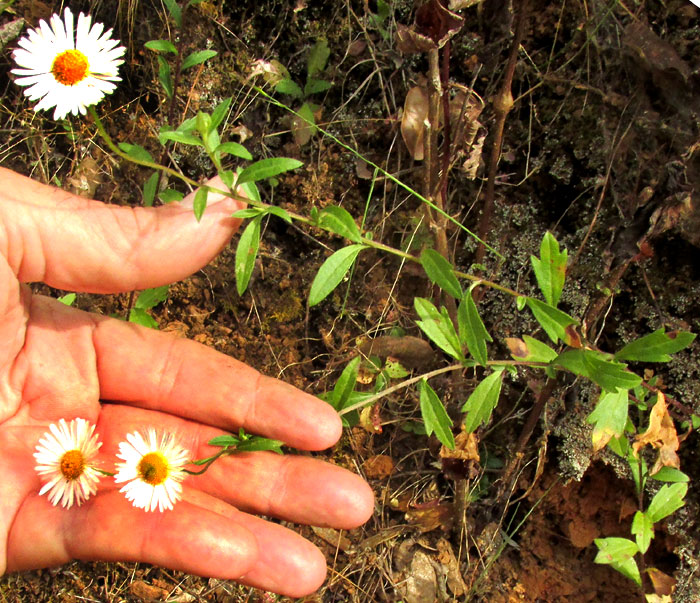
At the edge of a trail on a slope forested mostly with pines, the above daisy-like plant was so attention-getting that I wondered if it could be an escapee from someone's garden. Here's a close-up of the pretty flowering head:
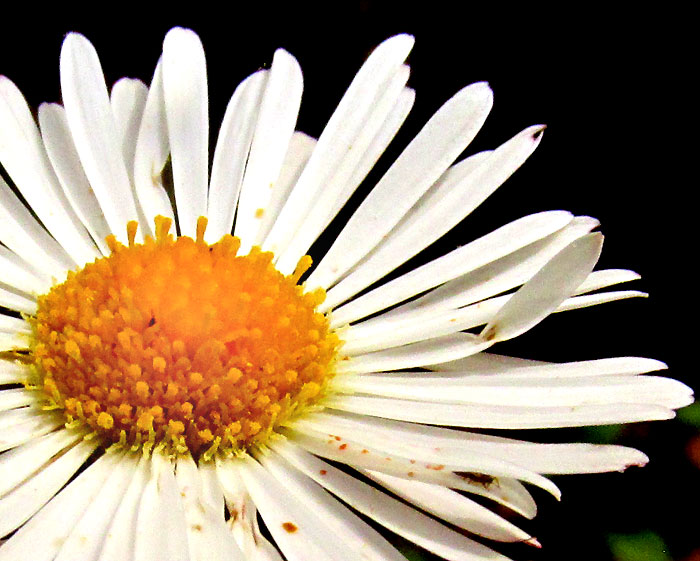
Compared to many daisy-like species, this one's white, petal-like ray florets were particularly numerous -- 70 or so -- slender, and somewhat delicate. The yellow disc florets in the flowering head's "eye" also were usually numerous and small.
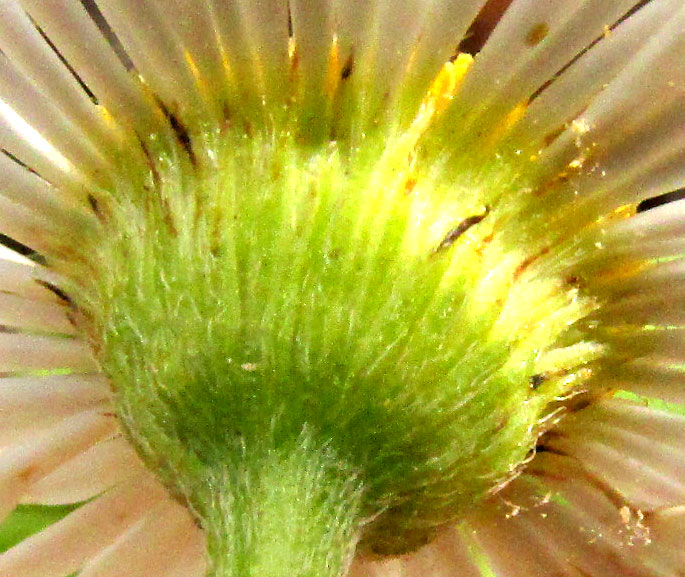
Below the flowering head, the green, bowl-like involucre's individual green phyllaries similarly were unusually narrow and numerous. Already at this point the above details were suggesting the big genus Erigeron, knowing as the fleabanes. That genus comprises close to 400 recognized species worldwide, which mostly occur in the Temperate Zone, but in the tropics sometimes are found at higher elevations. Breaking open a flowering head, things still looked right for the fleabanes:
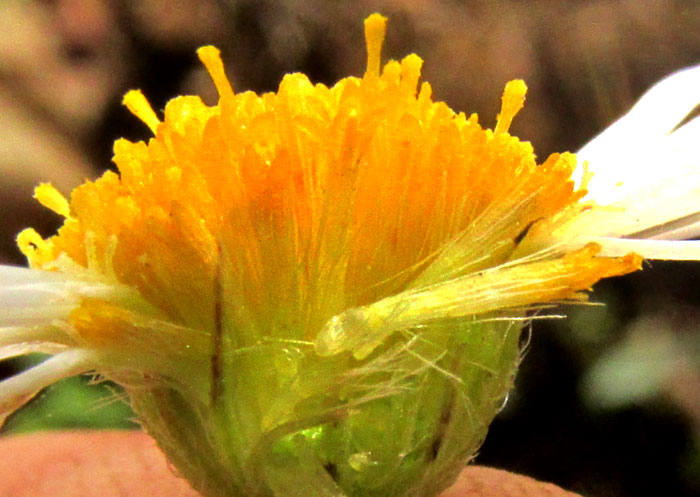
Mainly, atop each developing ovary arose numerous very slender, white bristles, the bristles later to form the cypsela-type fruit's "parachutes," which will catch the wind and carry the fruit into new territory. Also, between each of the slender disc florets there's no scale-like palea, and that's also right for fleabane flowers.
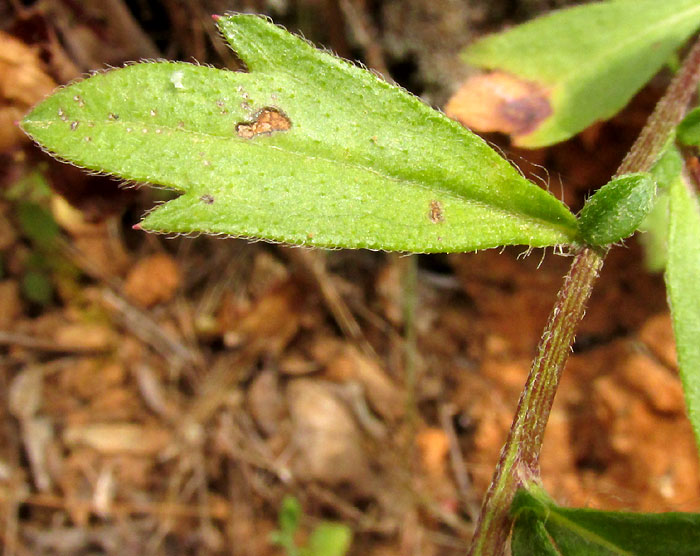
Fleabane leaves appear just one at a node, as seen above, and the blades' margins often are toothed or lobed, so the above leaf occurring at mid stem is about right for them, except that its particular shape, with one conspicuous lobe on each side, is fairly distinctive.
All the above features, especially the unusually large flowers and the lobed leaves, match what's often called the Mexican Fleabane, though several other English names also are commonly used. It's ERIGERON KARVINSKIANUS, native to highland Mexico south to Venezuela. As the several English names suggest, this species' big, pretty flowers have caught the eye of gardeners, so Erigeron karvinskianus is planted worldwide, and has escaped and become invasive in many countries.
The species name, karvinskianus -- sometimes our plant is called Karwinsky's Fleabane -- honors the Bavarian Wilhelm Friedrich Karwinsky von Karwin, who collected plants in Mexico from 1826 to 1831, and in 1840. Many plants and animals are named after him, including the butterfly called Karwinski's Beauty, Smyrna karwinskii.
The Gardenia.Net gardening website describes Erigeron karvinskianus as "... a graceful, trailing, woody-based perennial noted for its endless production of small daisies almost year-round." Because the plant tends to lean or lie on the ground, it's said to be ideal for raised beds, walls, and hanging baskets. Since the species is fairly drought tolerant, it's prescribed for Mediterranean gardens, coastal gardens, rock gardens, and for edging and groundcover . The Gardenia.Net site also makes the interesting comment that the plant is toxic to dogs, cats and horses. With a name like fleabane, some toxicity might be expected, especially to fleas.
However, I find no documentation of Erigeron karvinskianus being used traditionally against fleas. More than anyplace, in India the species seems to be highly regarded as medicinal. India's kiran.nic.in website reports that there our species' crushed leaves are applied to cuts and wounds as an astringent, which would stanch bleeding. Neithongunuo Angela Belho and others, in a 2022 publication entitled "Phytochemical screening and antimicrobial activity of Erigeron karvinskianus DC," conclude that the Mexican Fleabane "... can be considered as a potent plant-based antimicrobial agent." But no one appears to consider our plant a bane of fleas.
entry from field notes dated May 5, 2023, taken about 150m uphill on NE-facing slope, above intersection of road from Hwy 120 to San Joaquín, with road to El Doctor; juniper and pine forest on limestone bedrock; elevation ±2425m (7950 ft); Eastern Sierra Madre mountains of east-central Querétaro state, MÉXICO, (N20.88°, W99.62°)
MEXICAN FLEABANE FRUITING
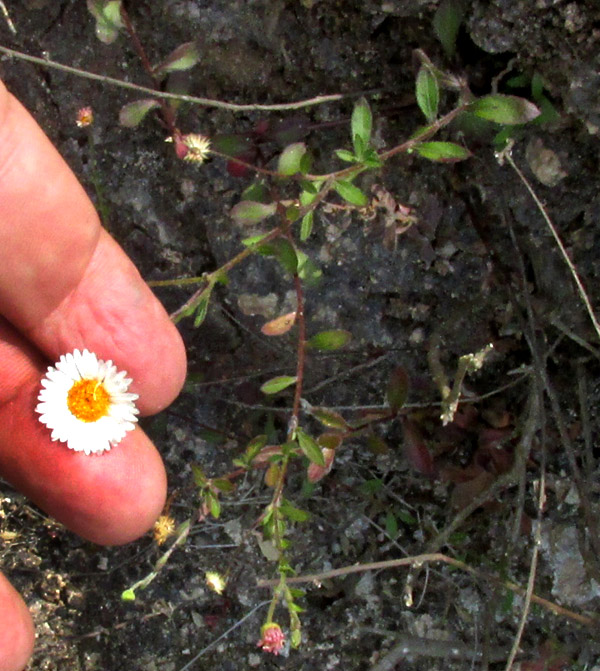
Later in the season another Mexican Fleabane showed up, seen above. Though in a different part of the mountains, it occupied the same habitat as the one earlier seen. However, its leaves lacked the shallow lobes earlier seen, and its flowers were a little smaller. Anatomical details of flowers were identical, though. Also, this plant was producing its cypsela-type fruits:
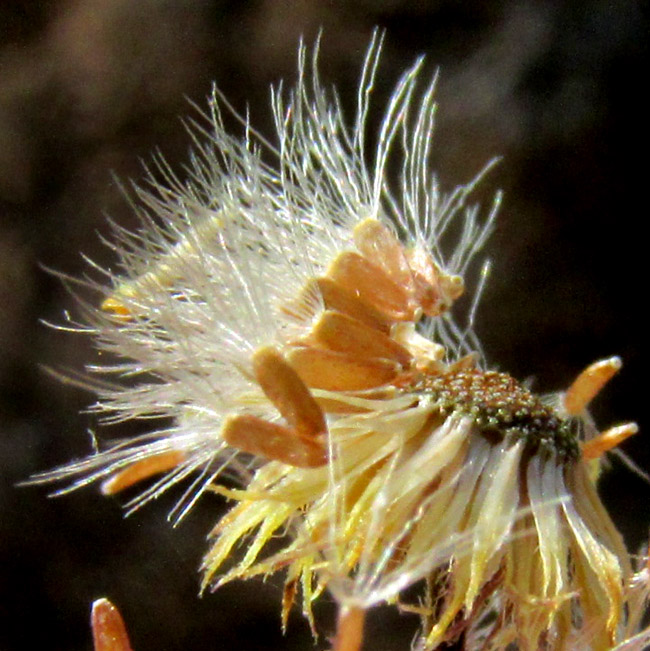
Also, this time a picture was taken on the semiwoody base:
